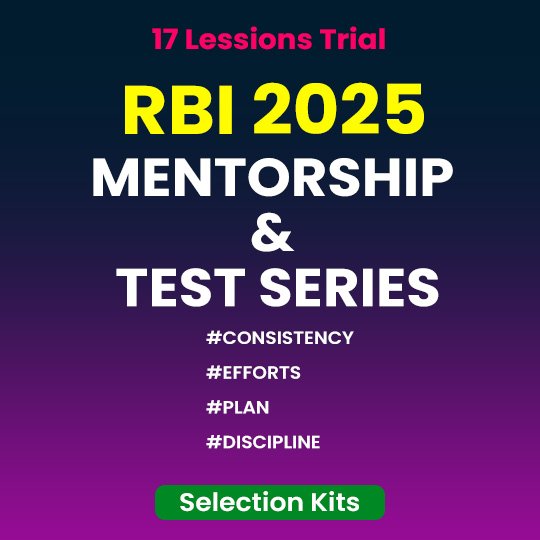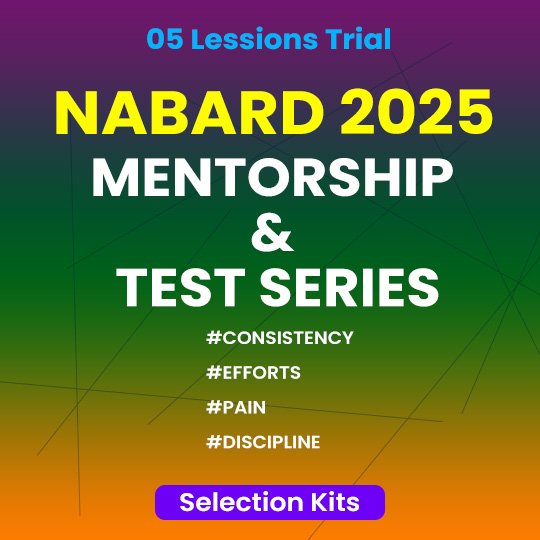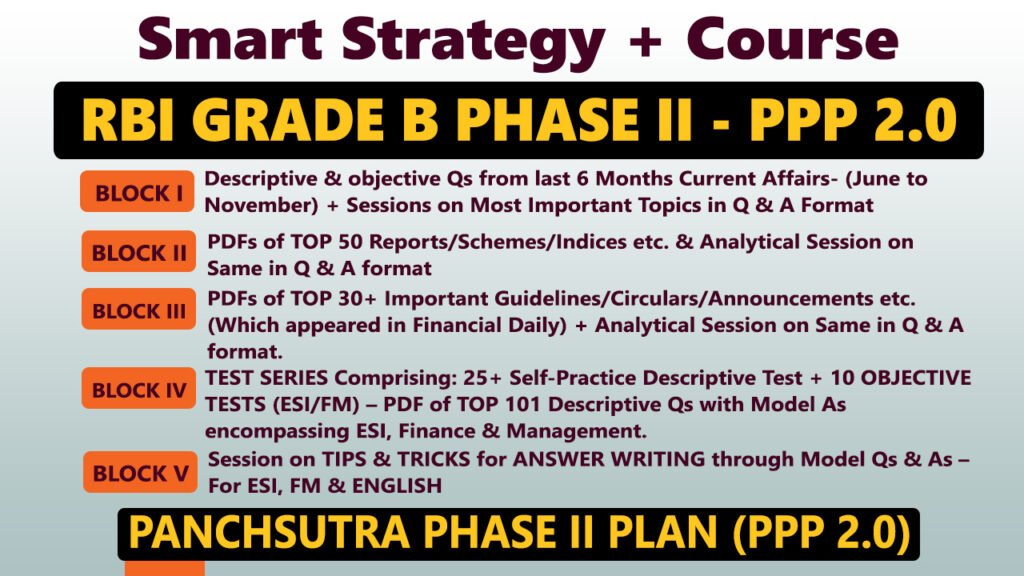Daily Current Affairs Quiz
8 July, 2025
International Affairs
1. Colombia and Uzbekistan Join New Development Bank (NDB)
Context:
Colombia and Uzbekistan have become the latest members of the New Development Bank (NDB), also known as the BRICS Bank. The announcement was made ahead of the 17th BRICS Summit, during the 10th meeting of the NDB’s Board of Directors. The addition brings the total membership to 11 countries.
Current Members of NDB
- Founding BRICS Nations (2015):
- Brazil
- Russia
- India
- China
- South Africa
- New Members:
- Bangladesh
- United Arab Emirates
- Egypt
- Algeria
- Colombia
- Uzbekistan
About the NDB
- Established: 2015
- Headquarters: Shanghai, China
- Purpose: Mobilize resources for infrastructure and sustainable development in BRICS and other emerging/developing economies
National Affairs
1. India’s SDG-4 Education Progress Report 2025
Context:
The National Indicator Framework (NIF) Progress Report 2025 was released on the occasion of the 19th National Statistics Day. It tracks India’s progress on the 17 Sustainable Development Goals (SDGs) using 284 national indicators.
Key Highlights:
- Report by: Ministry of Statistics and Programme Implementation (MoSPI)
- Coverage: 284 indicators across 17 SDGs (down from 290 in 2024)
- Reference Period: Data from 2015–16 to 2024–25
National Indicator Framework (NIF) Report 2025
- Social Protection Coverage: Rose from 22% in 2016 to 64.3% in 2025.
- Senior Citizens Supported: Institutional assistance increased from 23,000 (2015) to 1.57 lakh (2023–24).
- Agricultural Productivity: GVA per agricultural worker grew from ₹61,247 (2015–16) to ₹94,110 (2024–25).
- Inequality Decline (Gini Coefficient):
- Rural: 0.283 → 0.237
- Urban: 0.363 → 0.284
- Forest Cover: Increased from 21.34% (2015) to 21.76% (2023).
- Tertiary Education Gross Enrolment Ratio: Improved from 23.7% (2015–16) to 29.5% (2022–23).
- Renewable Energy Share: Rose to 22.13% (2024–25) from 16.02% (2015–16).
UNESCO SDG-4 Scorecard 2025 (Education Focus)
- Foundational Literacy Challenge:
- India is off-track by 11 percentage points in minimum reading proficiency at primary level.
- Benchmark: 56%, Actual: ~45%
- Teacher Training Shortfall:
- Pre-primary trained teacher benchmark: 88%, progress lagging.
- Education Financing Gap:
- India’s public expenditure on education: 3.1% of GDP (2023)
- SDG benchmark: 4%, NEP 2020 target: 6%
- Upper Secondary Participation Low:
- Out-of-school youth (15–17 yrs): 21%, vs. South Asia’s 13%, HICs < 2%
- Gender Parity:
- Fast progress in upper secondary completion
- India’s gender gap: 2.3%, better than South Asia’s 3.4%
Facts
| Indicator | 2025 Status | Benchmark / Change |
|---|---|---|
| Social protection coverage | 64.3% | ↑ from 22% (2016) |
| GVA per agri-worker | ₹94,110 | ↑ from ₹61,247 (2015–16) |
| Rural Gini coefficient | 0.237 | ↓ from 0.283 (2011–12) |
| Reading proficiency (primary) | ~45% | Benchmark: 56% |
| Education spending (GDP share) | 3.1% | Target: 4%–6% |
| Renewable energy share | 22.13% | ↑ from 16.02% (2015–16) |
2. Digital Census 2027: India’s First Tech-Driven Population Survey
Context:
The Registrar-General of India (RGI) has announced that the 2027 Census will be India’s first fully digital Census, leveraging mobile technology and self-enumeration portals to ensure faster data availability and improved accuracy.
Key Highlights:
- First Digital Census:
- For the first time, the Census will be conducted using technology to collect and transmit data electronically to the central server, enabling quicker compilation and processing.
- Two-Phase Census:
- The exercise will be conducted in two phases, with the option for residents to self-enumerate in both.
- Self-Enumeration Option:
- Citizens will be able to participate via a dedicated web portal, making the process more participatory and accessible.
- Mobile App Usage:
- Enumerators will use a Mobile App (available on Android & iOS) to collect data in English, Hindi, and regional languages.
3. India’s Maternal Mortality Ratio (MMR)
Context:
India’s Maternal Mortality Ratio (MMR) stands at 93 per 1 lakh live births (SRS 2019–21), showing notable improvement. However, regional disparities and healthcare system gaps persist, especially in Empowered Action Group (EAG) states.
Key Highlights:
Definition and Measurement
- Maternal Mortality Ratio (MMR): Number of maternal deaths per 100,000 live births.
- Maternal Death (WHO): Death of a woman during pregnancy or within 42 days of termination due to pregnancy-related causes.
MMR Data (2019–21)
- India’s MMR: 93
- Lowest MMR: Kerala (20)
- Highest MMR: Assam (167)
- Southern states outperform EAG states (e.g., Bihar, UP, MP, Odisha).
Why MMR Matters
- Public Health Barometer: Reflects healthcare access, gender equity, emergency care systems.
- SDG 3.1 Target: Reduce global MMR to <70 by 2030 — India needs faster progress.
- Avoidable Tragedy: Majority of maternal deaths are preventable with timely obstetric care.
Key Challenges
- Three Delays Model (Deborah Maine Framework):
- Delay in Decision: Due to social stigma, ignorance, or poor family support.
- Delay in Transit: Especially in tribal, hilly, or remote areas.
- Delay in Treatment: Lack of specialists, surgical readiness, blood availability.
- Infrastructure Bottlenecks:
- Only 2,856 out of 5,491 Community Health Centres (CHCs) function as First Referral Units (FRUs).
- 66% shortage of specialists in public health facilities.
- Medical Causes of Maternal Deaths:
- Postpartum haemorrhage, hypertensive disorders, sepsis, obstructed labour, unsafe abortions.
- Underlying Risk Factors
- Anaemia, malnutrition, and comorbidities (e.g., TB, malaria, UTIs) are prevalent among pregnant women in vulnerable states.
Government Initiatives
- Janani Suraksha Yojana (JSY):
- Cash incentives for institutional deliveries.
- Incentives to ASHAs for mobilising pregnant women.
- Janani Shishu Suraksha Karyakram (JSSK):
- Free transport, medicines, diagnostics, and delivery care at public hospitals.
- FRU Strengthening:
- Goal of minimum 4 FRUs per district, with specialists and blood storage.
- Maternal Death Reviews (MDRs):
- Mandatory under National Health Mission (NHM) to identify and correct gaps.
- Kerala’s Confidential Maternal Death Reviews:
- Focus on clinical audits, training, and facility preparedness (e.g., use of uterine clamps, embolism protocols) — key to Kerala’s low MMR.
4. National Overseas Scholarship (NOS)
Context:
The Ministry of Social Justice and Empowerment has withheld provisional award letters for 66 out of 106 selected candidates under the National Overseas Scholarship (NOS) scheme for FY26, citing shortage of funds.
About the National Overseas Scholarship (NOS) Scheme
- Scheme Type:
- Central Sector Scheme under the Ministry of Social Justice and Empowerment.
- Objective:
- To support students from marginalised and economically weaker sections in pursuing Master’s and Ph.D. programs abroad, enhancing their social and economic mobility.
Target Beneficiaries
- Scheduled Castes (SCs)
- Denotified, Nomadic & Semi-Nomadic Tribes
- Landless Agricultural Labourers
- Traditional Artisans
Eligibility Criteria
| Criteria | Details |
|---|---|
| Education | Master’s: Bachelor’s with ≥ 60%Ph.D.: Master’s with ≥ 60% |
| Age Limit | Not more than 35 years as of April 1 of the selection year |
| Income Limit | Annual family income ≤ ₹8 lakh |
| University | Unconditional admission to Top 500 QS-ranked universities |
| Other Conditions | – Not already studying or settled abroad – Max two children per family eligible |
Key Features
- Total Annual Slots: 125
- 115 for SCs
- 6 for Denotified Tribes
- 4 for Agricultural Labourers/Artisans
- 30% reservation for women candidates.
- Two-Phase Selection Process:
- Phase 1: Candidates with admission in QS Top 500 institutions.
- Phase 2: Broader eligibility including QS-ranked or recognised global institutions.
- State-wise Cap: No more than 10% of slots per state to promote geographic diversity.
- Conditional Funding Clause: If funding is insufficient, fewer award letters are issued despite selection.
5. Northeast District SDG Index 2023–24: NITI Aayog
Context:
The NITI Aayog, in collaboration with the Ministry of Development of Northeastern Region (MDoNER) and supported by the United Nations Development Programme (UNDP), released its 2023–24 Northeast District SDG Index. The report highlights a sharp rise in the share of ‘front runner’ districts, signaling significant progress in localising Sustainable Development Goals (SDGs) across India’s Northeastern states.
Key Highlights:
Overall Performance
- Front Runner Districts (SDG Score 65–99):
- 2021–22: 62% of NE districts
- 2023–24: 85% of NE districts
- A district is labelled “Performer” if it scores between 50 and 64.9.
Top-Performing Districts (2023–24)
| Rank | District | State | SDG Score |
|---|---|---|---|
| 1 | Hnahthial | Mizoram | 81.4 |
| 2 | Champhai | Mizoram | 79.8 |
State-Wise Performance
- All districts in Mizoram, Sikkim, and Tripura are now in the ‘Front Runner’ category.
- Significant improvements in Meghalaya (from 1 to 10 front runner districts).
| State | 2021–22 Front Runners | 2023–24 Front Runners |
|---|---|---|
| Arunachal Pradesh | 13 | 16 |
| Assam | 23 | 31 |
| Manipur | 8 | 12 |
| Meghalaya | 1 | 10 |
| Mizoram | 7 | 11 |
| Nagaland | N/A | 9 |
| Sikkim | 4 | 6 |
| Tripura | 8 | 8 |
Areas of Concern
Despite the overall rise, decline in front runner status was noted for:
- SDG 7: Affordable and Clean Energy
- SDG 10: Reduced Inequalities
- SDG 12: Responsible Consumption and Production
About the Index
- Edition: Second (first released in August 2021)
- Coverage:
- 2021: 103 of 120 districts
- 2023: 121 of 131 districts (92%)
- Indicators: 84 in total
- 41 from central ministries
- 43 from state sources
- Provides granular, district-level tracking of progress on all 17 SDGs
Banking/Finance
1. SEBI Proposes Relaxation of Broad-Basing Norms for Mutual Funds
Context:
The Securities and Exchange Board of India (SEBI) has issued a consultation paper proposing relaxation of the broad-basing requirement for pooled investment funds, following representations by the Association of Mutual Funds in India (AMFI) and other industry stakeholders.
What Are Non-Broad-Based Funds?
- Funds with fewer than 20 investors or where one investor holds more than 25% of the corpus.
- Previously, SEBI regulations favored broad-based funds to mitigate risks related to preferential treatment or insider dealings.
Key Proposals by SEBI
- Advisory Services via Separate Unit
- AMCs will be allowed to offer advisory services to pooled funds (with fewer than 20 investors or a single investor holding over 25% of the corpus) through a distinct and ring-fenced unit with dedicated personnel and separate infrastructure.
- Target Funds
- Covers pooled non‑broad‑based funds, including offshore institutional funds and family-office structures that didn’t qualify as broad-based.
- Governance & Conflict Safeguards
SEBI’s proposal includes:- Defined trade allocation and disclosure policies
- Bans on performance-linked fee structures
- Adherence to insider-trading norms
- Operational segregation to prevent conflicts between mutual fund operations and advisory services
- Expanded Ancillary Services
- AMCs and their subsidiaries may also:
- Serve as global distributors of their investment vehicles
- Act as Points of Presence (PoP) for pension schemes (in compliance with PFRDA guidelines)
- Undertake fund distribution and marketing activities aligned with fund management
- AMCs and their subsidiaries may also:
Why It Matters
- Business Expansion: Facilitates entry into institutional advisory and structured products
- Investor Choice: Allows high-net-worth individuals, family offices, and foreign partners to access AMC expertise
- Regulatory Balance: Ensures investor protections and market integrity while enabling AMCs to diversify
BS & TET
2. NPCI to Launch IoT-Enabled UPI Payments
Context:
The National Payments Corporation of India (NPCI) is developing an IoT (Internet of Things)-ready version of UPI, aimed at enabling autonomous payments via smart devices such as wearables, connected vehicles, and home appliances. This innovation is part of NPCI’s 2025 roadmap and supports its goal of tenfold growth in UPI transactions.
Key Highlights:
What’s Happening?
- The National Payments Corporation of India (NPCI) is developing an IoT-ready version of UPI.
- Smart devices like refrigerators, washing machines, smartwatches, connected cars, and smart TVs will soon be able to initiate UPI transactions independently — for example, paying for parking, metro tickets, or renewing subscriptions automatically.
How It Will Work
- Device-specific UPI IDs
- Each device will be assigned a unique virtual payment address, linked to the user’s main UPI account.
- Payment Mandates and AutoPay Features
- Implementation of delegated payment frameworks such as UPI Circle and AutoPay.
- Users will be able to define mandates and transaction limits per device for better control.
- Security and User Authorization
- Transactions will require pre-approved mandates, OTPs, or device-based authentication.
- NPCI plans to implement strict safeguards to manage risks and prevent unauthorized use.
Why It Matters
- For NPCI: Supports its goal of 10x expansion in UPI use cases and penetration.
- For Consumers: Enables seamless, contactless payments through everyday smart devices.
- For India: Boosts its role as a pioneer in embedded financial infrastructure, enhancing digital adoption and financial inclusion.
The Internet of Things (IoT)
The Internet of Things (IoT) refers to a network of physical objects embedded with sensors, software, and other technologies that enable them to connect and exchange data with other devices and systems over the internet. Essentially, it’s about making everyday “things” smart and interconnected, allowing them to communicate and automate tasks, often without human intervention.
BS
3. SEBI to Intensify Surveillance on Derivatives Trading
Context:
SEBI Chairman Tuhin Kanta Pandey, speaking at a public event on Monday, announced that the regulator will strengthen surveillance mechanisms for India’s derivatives market. This comes in the backdrop of recent regulatory action against high-frequency trading firm Jane Street.
Key Highlights:
Focus on Derivatives Oversight
- SEBI plans to tighten surveillance frameworks for derivatives trading on both:
- Stock exchanges
- Regulator’s internal systems
- The move aims to detect and deter:
- Market manipulation
- Abuse of algorithmic and high-frequency trading (HFT)
- Insider trading and front-running
- SEBI’s action against Jane Street, a U.S.-based HFT firm, was termed a “surveillance matter”.
- The firm allegedly engaged in abusive trading patterns that warranted regulatory scrutiny.
4. Expand Financial Inclusion Using AI and Fintech Innovation: DFS Secretary
Context:
At the CII’s 3rd Financial Inclusion and Fintech Summit (New Delhi, July 7), M. Nagaraju, Secretary of the Department of Financial Services (DFS), urged fintech firms to deepen financial inclusion by leveraging Artificial Intelligence (AI) and digital innovation, while also strengthening fraud and cyber risk management.
Key Highlights:
DFS Push for AI-Led Financial Inclusion
- Fintechs should:
- Use AI and digital tools to expand access to financial services.
- Develop fraud detection and cybersecurity solutions to safeguard digital finance ecosystems.
- Fintechs were encouraged to lead innovation in onboarding, authentication, fraud mitigation, and financial literacy.
Financial Inclusion & SDGs
- 7 out of 17 UN Sustainable Development Goals (UNSDGs) are directly linked to financial inclusion.
- Financial inclusion is critical to:
- Poverty alleviation
- Economic growth
- Social empowerment
Progress in India’s Financial Inclusion (2014–2024)
| Indicator | Before 2014 | As of 2024 |
|---|---|---|
| Adult bank account access | 35% | 99% |
| Jan Dhan accounts opened | Lakhs | Over 50 crore |
- Key schemes cited:
5. Rupee Weakens Sharply Amid Trump Tariff Threats and Dollar Strength
Key Highlights
- Rupee closed at 85.86 per USD, down by 47 paise on Monday.
- During intraday trade, it breached the 86-mark, touching 86.03 before mild recovery.
- The partial recovery is attributed to RBI intervention via dollar sales.
Trigger: Trump’s Tariff Announcement
- Former U.S. President Donald Trump announced a 10% tariff on countries aligning with BRICS (Brazil, Russia, India, China, South Africa).
- He labelled such alignments as “anti-American”, causing global trade jitters.
- The 90-day tariff suspension window is also set to expire, with no new trade deal signed yet.
Other Contributing Factors
- Strong demand for dollars by a major private bank put further pressure on the rupee.
- Stop-loss orders were triggered once the rupee crossed 85.80, leading to more depreciation.
- The Dollar Index rose to 97.36 from 96.95, strengthening the greenback against a basket of six currencies.
6. SEBI Reviewing AIF Norms
Context:
The Securities and Exchange Board of India (SEBI) is re-evaluating its December 13, 2024 circular on Alternative Investment Funds (AIFs) after fund managers, legal advisors, and investors raised concerns about the rules’ inflexibility and impact on existing structures.
Key Features of the 2024 Circular:
Core Principles Introduced
- Pro-rata Rights:
- Profits and losses must be shared proportionally to each investor’s committed capital.
- Pari-passu Rights:
- All investors must be treated equally in terms of drawdowns and return distributions, unless an exemption applies.
Objective
- Ensure fairness, transparency, and uniformity in investor treatment within AIFs.
- Bring clarity to waterfall distribution models and preferential rights often used in legacy and global investor structures.
What Are Alternative Investment Funds (AIFs)?
Alternative Investment Funds (AIFs) are privately pooled investment vehicles that raise funds from investors to invest in non-traditional assets such as private equity, venture capital, hedge funds, infrastructure, and social impact ventures. These differ from conventional instruments like stocks and mutual funds and are governed under the SEBI (Alternative Investment Funds) Regulations, 2012.
Legal Structure:
AIFs in India can be formed as:
- Trusts
- Limited Liability Partnerships (LLPs)
- Companies
- Other permissible entities
Types of AIFs in India
Category I: Growth-Oriented and Impact Investments
Focus: Promote innovation, start-ups, SMEs, and social impact.
- Venture Capital Funds (VCFs): Finance high-growth start-ups; high risk, high return.
- Angel Funds: Early-stage funding with ₹25 lakh minimum per investor.
- Infrastructure Funds: Invest in sectors like transport, energy, and urban development.
- Social Venture Funds: Support impact-driven ventures in health, education, etc.
Category II: Private and Debt-Oriented Funds
Focus: Invest in private equity and debt without leverage.
- Private Equity (PE) Funds: Back unlisted firms with long lock-in periods.
- Debt Funds: Invest in unlisted debt securities with strong governance.
- Fund of Funds (FoFs): Invest in units of other AIFs for diversified exposure.
Category III: High-Risk, Market-Linked Strategies
Focus: Aggressive strategies, including leverage and arbitrage.
- PIPE Funds: Buy publicly traded shares at discounted prices.
- Hedge Funds: Invest in domestic/global markets using derivatives and leverage; high fee structure (typically 2% management + 20% performance fee).
Investor Eligibility and Requirements:
- Who Can Invest: Resident Indians, NRIs, foreign nationals.
- Minimum Investment: ₹1 crore (₹25 lakh for fund managers, employees, directors).
- Lock-in Period: Minimum 3 years.
- Investor Cap: Max 1,000 investors per scheme (49 for Angel Funds).
Economy
1. Jan Vishwas Bill 2.0
Context:
The Government of India is considering incorporating Section 27 of the MSMED Act, 2006 into the proposed Jan Vishwas Bill 2.0, aiming to decriminalize minor offences related to non-disclosure of business information by Micro, Small and Medium Enterprises (MSMEs).
Key Highlights:
- Objective
- Reduce compliance burden and decriminalize petty economic offences to promote ease of doing business.
- Plug financial leakages faced by MSMEs due to minor penalties.
- Background
- Jan Vishwas Bill 2.0 was announced in the FY26 Budget by Finance Minister Nirmala Sitharaman.
- It will decriminalize 100 more laws, following the first Jan Vishwas Bill (2023) that decriminalized 180 provisions.
- Focus on MSMEs
- India has over 65 million registered MSMEs, contributing:
- 30% to GDP
- 45% to exports
- MSMEs often face penalties for minor non-compliance, which can impact capital flow and growth.
Section 27 of the MSMED Act
- Provision: Penalizes MSMEs for non-disclosure of business-related information to central or state authorities.
- Penalty structure:
- ₹1,000 for failure to furnish required information.
- Fines range from ₹1,000 to ₹10,000 depending on the nature of non-compliance.
Policy Impact
- Reduces fear of prosecution for small businesses.
- Promotes trust-based governance and voluntary compliance.
- Frees up resources for MSMEs to focus on operations and innovation.
Agriculture
1. Urea: A Key Fertilizer in Indian Agriculture
Context:
The Department of Fertilizers has prohibited fertiliser companies from planning any plant shutdowns in FY2025–26, citing the need to ensure adequate urea availability during both kharif and rabi seasons. The directive was issued via a government note dated July 3, 2025, shared with top urea manufacturers.
Urea is the most widely used nitrogenous fertilizer in India and globally. With a high nitrogen content (46%), it plays a crucial role in enhancing plant growth and increasing crop yields. Amid rising concerns over fertilizer shortages and import dependency, understanding urea’s utility and proper usage is vital.
Key Features of Urea Fertilizer
- Primary Nitrogen Source: Urea provides nitrogen—a critical nutrient for vegetative growth, particularly in cereals and high-yield crops.
- High Nutrient Efficiency: Contains 46% nitrogen by weight, making it highly efficient and cost-effective.
- Mechanism of Action:
- Undergoes hydrolysis and nitrification in soil to release nitrogen as ammonium (NH₄⁺) and nitrate (NO₃⁻), both absorbable by plants.
- Enhanced Crop Yields: Boosts foliage development, chlorophyll synthesis, and overall productivity.
- Versatility: Suitable for a wide range of crops and climatic zones.
- Other Uses: Also used in animal feed, resins, adhesives, and pharmaceuticals.
Best Practices in Urea Application
- Proper Application: Apply based on crop-specific requirements to avoid overuse.
- Soil Incorporation: In dry or warm climates, mix into soil to minimize nitrogen loss via volatilization.
- Timing & Placement:
- Apply during key vegetative stages for maximum uptake.
- Avoid surface application before rainfall or irrigation to reduce leaching.
- Avoiding Overuse: Excess nitrogen may lead to:
- Soil acidification
- Water pollution (nitrate leaching)
- Increased greenhouse gas emissions (N₂O)
Challenges & Environmental Considerations
- Nitrogen Loss: Up to 50% nitrogen can be lost due to volatilization or leaching if poorly managed.
- Pollution Risk: Improper use contributes to eutrophication in water bodies and air pollution via ammonia volatilization.
- Sustainability Concerns: Need for balanced fertilization (e.g., combining urea with phosphates, potash, or nano-urea) to ensure long-term soil health.
2. iTrapper: Smart Light Trap to Target Pests & Save Beneficial Insects
Context:
Hyderabad-based Delta Things Pvt Ltd, in collaboration with PJTSAU, has developed iTrapper, an IoT-enabled intelligent light trap that selectively eliminates crop pests like pink bollworm while safeguarding beneficial insects.
Key Highlights:
- Core Technology:
- Multiwavelength LED bulb
- IoT microcontroller
- Crop-specific light wavelength programming
- Working Principle:
- Emits specific light wavelengths at targeted times to attract harmful pests
- Automatically shuts down during periods when beneficial insects are active
- Crop-specific settings (e.g., cotton → pink bollworm trap at sunset; paddy → gall midge trap post-midnight)
Benefits & Impact
- Eco-Friendly: Chemical-free pest control method
- Biodiversity Preservation: Does not kill beneficial insects
- Reduced Costs: Minimizes need for pesticide sprays
- Smart Features (Export Version):
- Bluetooth & mobile app support
- Cloud data integration
- Onboard camera for hourly image capture
- Predictive pest advisories based on AI and weather analysis
Why It Matters
- Sustainable Agriculture: Reduces ecological harm caused by indiscriminate pest traps
- Precision Farming: Promotes data-driven, crop-specific pest control
- Innovation in AgriTech: Indian start-ups leading with scalable, smart farming tools
Facts To Remember
1. Mexico wins CONCACAF Gold Cup for record-extending 10th time
Mexico defeated USA 2-1 to retain the CONCACAF Gold Cup and lift the title for a record-extending 10th time. An Edson Alvarez header 13 minutes from time completed a come-from-behind victory for Mexico after a typically hard-fought tussle between the North American arch-rivals.
2. Securitisation volumes up 9% Q1 at ₹ 49K cr in
The sale of loans by banks and nonbanking financial companies (NBFCs) through securitisation grew 9 per cent on ayear-on-year (Y-o-Y) basis to ₹ 49,000 crore in the first quarter of2025-26 (Q1FY26), according to ratings agency Crisil.
3. Gujarat Becomes 3rd Indian State to Cross 1 Crore Stock Market Investors
This milestone was confirmed by the National Stock Exchange (NSE). Gujarat has become the third state in India to record over 1 crore registered stock market investors.
4. Bawana Waste-to-Energy Plant Gets Environmental Clearance Amid Protests
The Union Environment Ministry has granted environmental clearance (EC) to a proposed Waste-to-Energy Plant (WTE) in Bawana, making it the fifth such facility set to come up in Delhi.
4. ₹8,000 Crore Proposals Received Under Centre’s Electronics Components Manufacturing Scheme (ECMS)
The Ministry of Electronics and Information Technology (MeitY) has received proposals worth ₹7,500–8,000 crore from over 100 Indian and global firms under the newly launched Electronics Components Manufacturing Scheme (ECMS), aimed at strengthening India’s electronics supply chain and reducing import dependency.



















